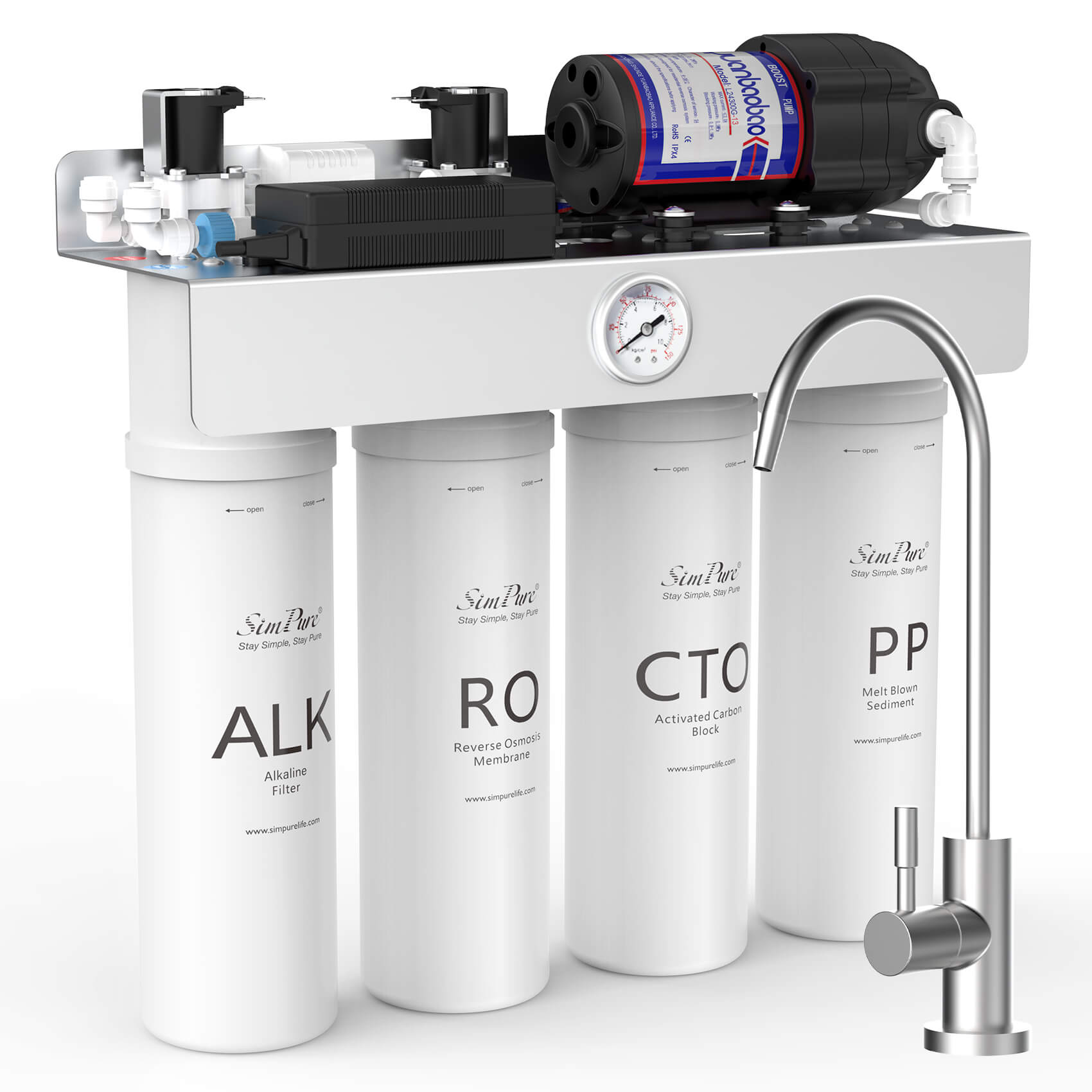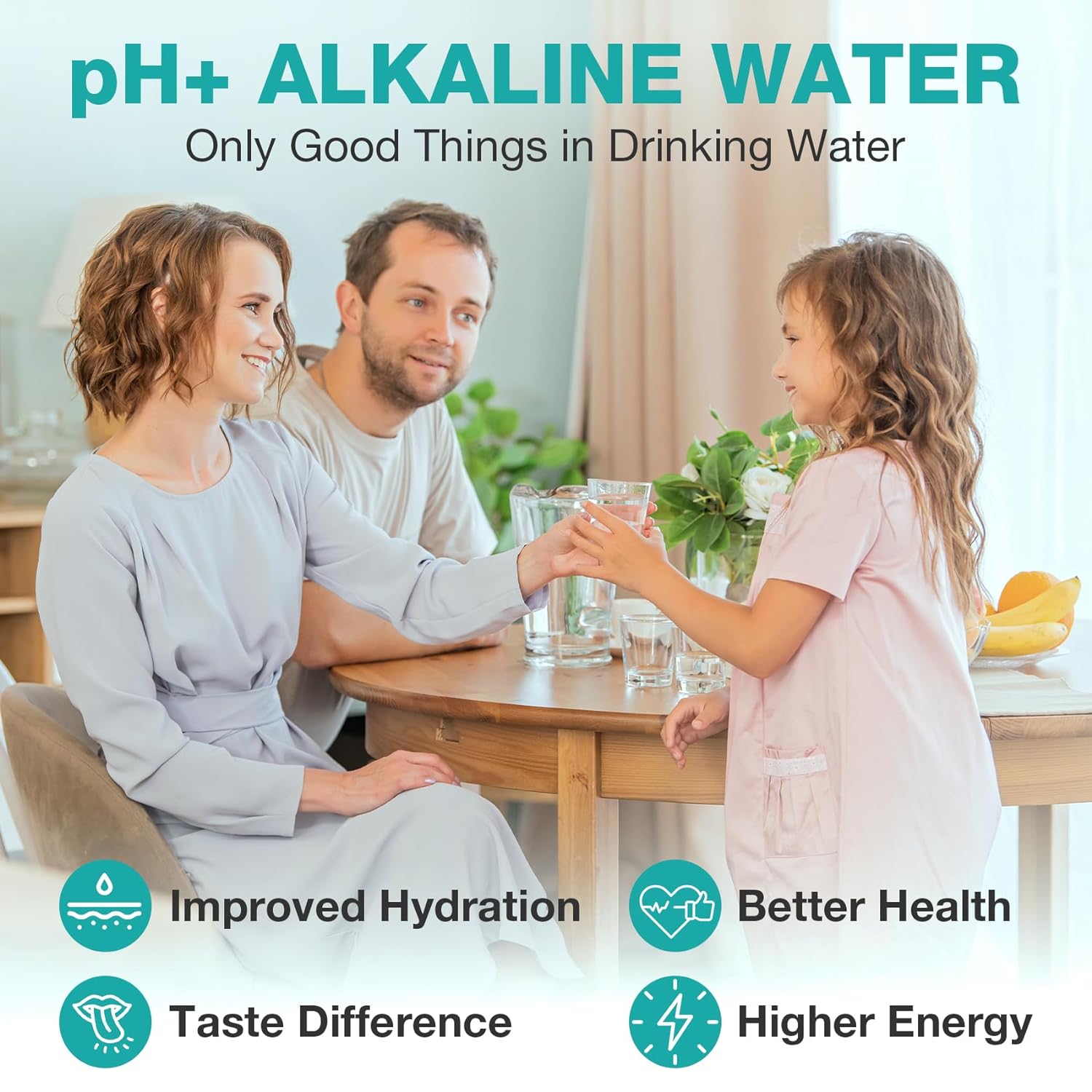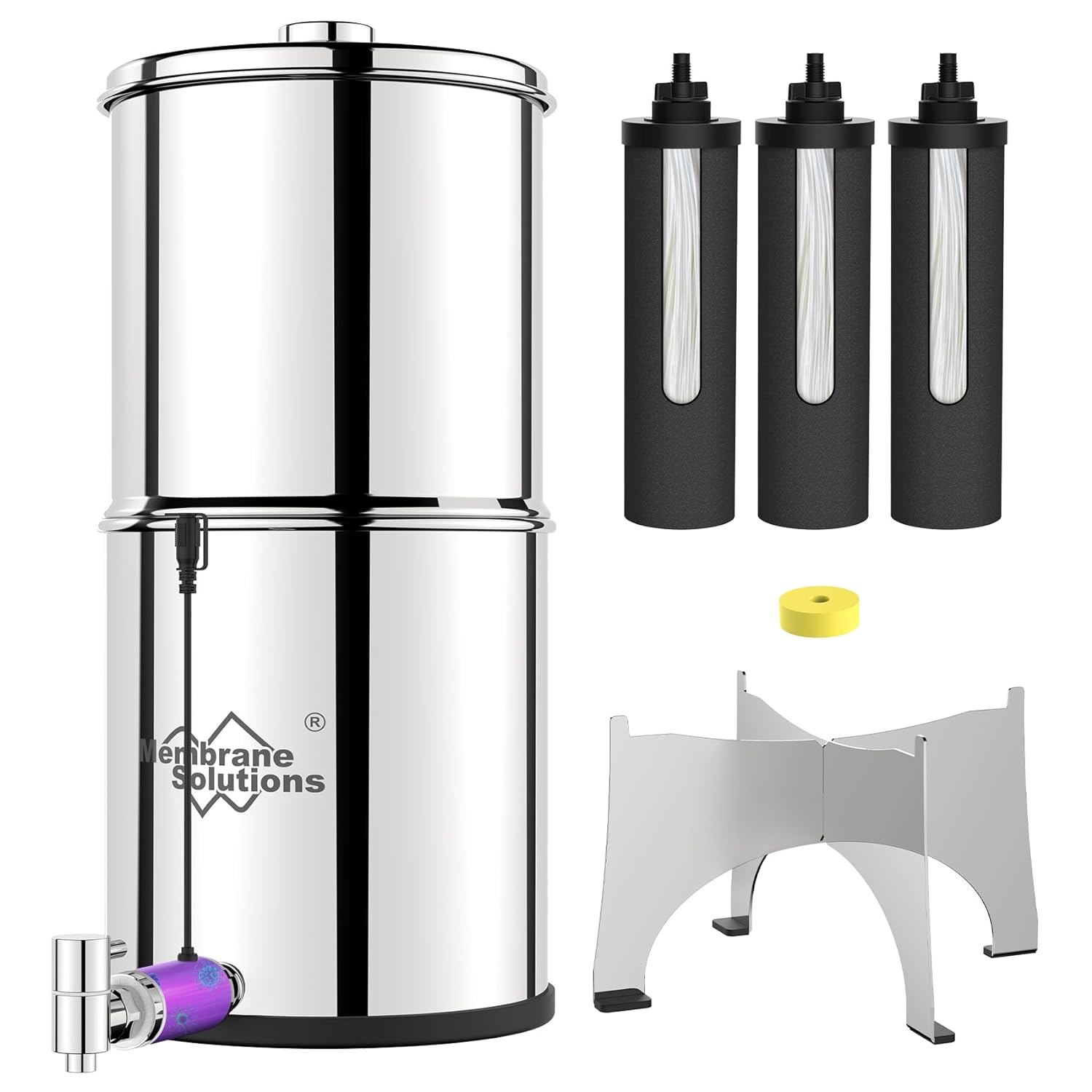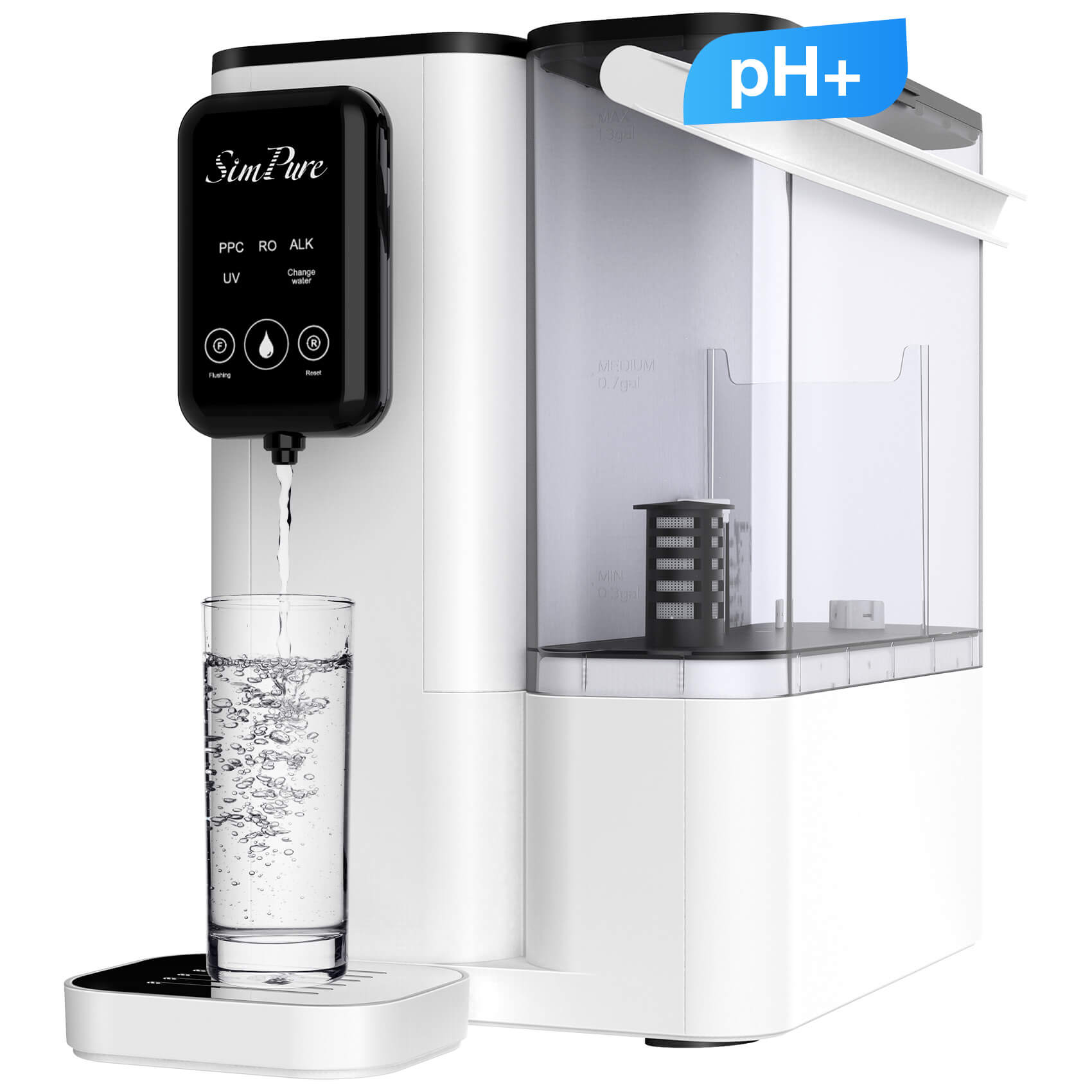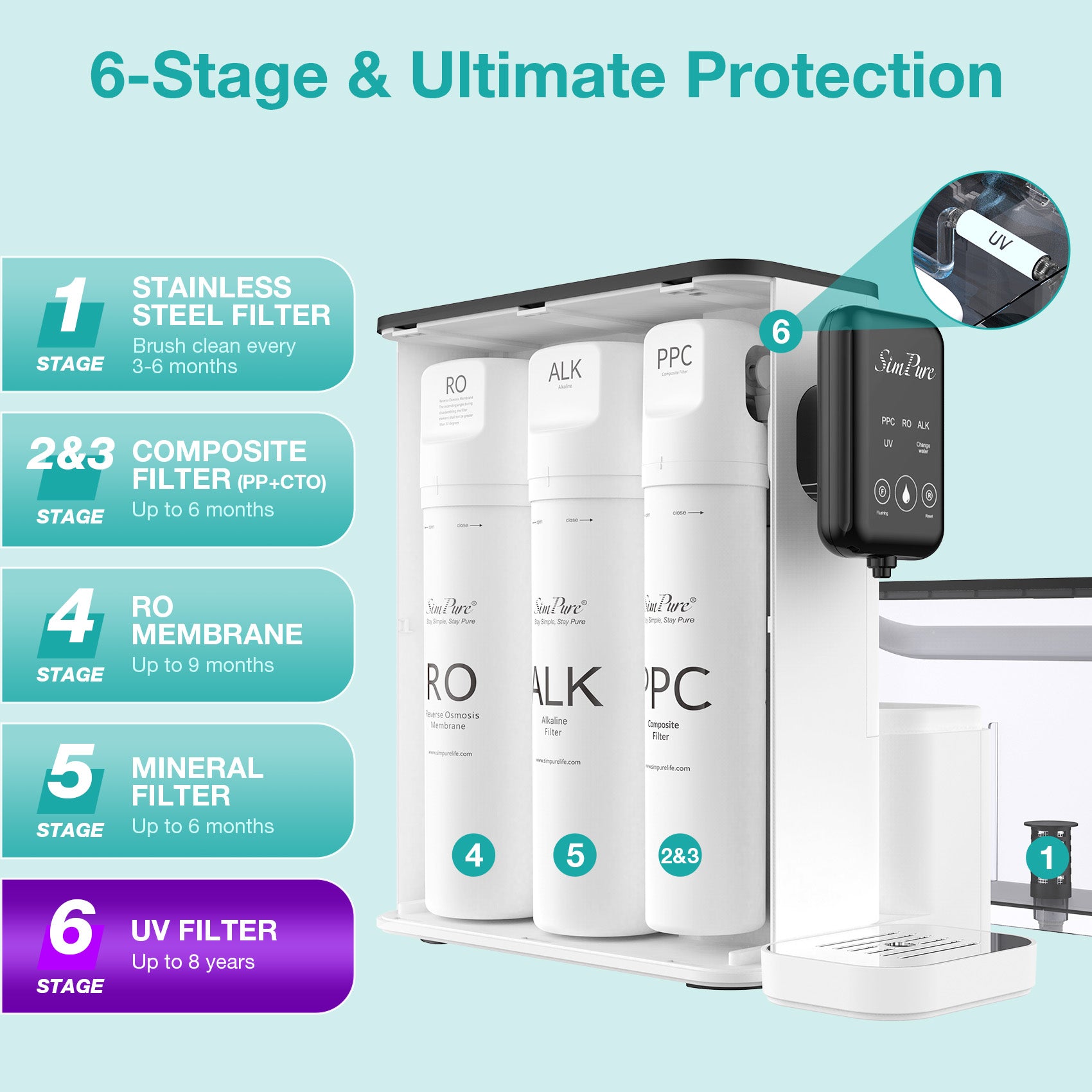When choosing the right water for your health and lifestyle, you might wonder, "Does purified water have sodium?" Suppose you have certain health conditions, such as hypertension, or follow a low-sodium diet. In that case, you may be sceptical about choosing purified water, especially if you are monitoring your sodium intake.
This blog addresses the possibility of sodium in purified water, the impact of different purification processes on sodium levels, and the comparison between different water types to help you make an informed decision.
1. What is Purified Water?
Before you learn about the possibility of sodium in purified water, it is essential to understand what purified water is. Purified water, in essence, is water free of major contaminants, debris, and other unwanted substances. It undergoes vigorous filtration processes to be completely pure and free of impurities. Here are the most common purification methods employed to make water completely pure.
Reverse Osmosis

Reverse osmosis is the best and the most effective water purification method that removes a wide range of contaminants, including dissolved salts, chemicals, and bacteria. This process works by forcing water through a semipermeable membrane with pores as small as 0.0001 microns—extremely fine, even smaller than most bacteria and viruses. The membrane acts as a barrier, allowing only water molecules to pass through while trapping impurities.
Carbon Filtration
Carbon filtration is another top choice for purifying water. It removes contaminants via adsorption. Carbon filters comprise an activated carbon filter that attracts contaminants to its surface. The carbon also acts as a catalyst to change the chemical composition of some contaminants. Carbon filters are effective at removing chlorine, pesticides, THMS, and many organic compounds.
Distillation
Distillation is a simple water purification method where water is first converted into steam and then condensed back into liquid. Since contaminants do not evaporate with the water, they are left behind. The condensed water is essentially free of impurities and contaminants, making it pure. Distillation effectively removes metals, nitrate, and water hardness. The boiling process also kills microorganisms such as bacteria and some viruses.
2. Does Purified Water Have Sodium?
Now, let’s address the main question: does purified water have sodium? Well, purified water, particularly when processed through methods like reverse osmosis or distillation, generally contains negligible amounts of sodium. But the exact amount can vary depending on the type of purification method used.
Different Effects of Purification Methods on Sodium Content
Let’s see how the following purification methods affect the sodium levels in water.
- Reverse Osmosis
Reverse osmosis is highly effective at reducing sodium levels. This process forces water through a semipermeable membrane, leaving sodium behind. Reverse osmosis can remove a variety of contaminants including lead, arsenic, fluoride, nitrates, pesticides, chlorine, and bacteria. It also effectively reduces common pollutants in U.S. drinking water, such as heavy metals, volatile organic compounds (VOCs), pharmaceutical residues. As a result, water becomes free of dissolved salts like sodium and calcium, making it an excellent choice for those concerned about their sodium intake.
- Carbon Filtration
The second filtration procedure, i.e., carbon filtration, is less effective at removing sodium from water. However, it is excellent at eliminating organic compounds from water and improving its taste.
- Distillation
Distillation is also a powerful method for reducing sodium levels. By boiling the water and converting it into steam, distillation leaves behind most impurities, including sodium. So, if you wonder does distilled water have salt, then the answer is yes.
In a nutshell, the reverse osmosis system (which ususally contains pre-filters to remove large particles, the RO membrane for fine filtration, post-filters to polish the water. ) is the best solution for sodium-free water due to its multi-stage filtration process, which effectively removes dissolved salts, including sodium. RO systems typically include pre-filters, the RO membrane, and post-filters, ensuring thorough purification.
Bonus: If you wonder why purified water tastes salty, give this blog a read.
3. Sodium Levels in Our Common Types of Drinking Water
It’s also helpful to understand how sodium levels compare across different types of water. In the next section, we'll examine the sodium content in various water sources to see how purified water stacks up against them.
-
Tap Water: Tap water has varying levels of sodium depending on the treatment process. According to research, sodium in most states of the US is usually lower than 200 mg/L of water and may be less than 50 mg/L in some states, but it can be higher in areas with naturally salty water or where water softeners are used.
-
Well Water: Sodium levels in well water can be unpredictable, as they depend on local geology. Well water may contain more sodium depending on how near the well is located to areas rich with salt, such as lands near agricultural farming, etc.
-
Bottled Water: Bottled water usually has a higher sodium level as companies add sodium to enhance water’s taste. The sodium content in bottled water can range from 100 mg/L to 1000 mg/L. But it varies widely by brand and type. Some brands of mineral water naturally contain higher levels of sodium, while others, like distilled or purified bottled water, usually have very low or negligible sodium content.
-
Purified Water: Purified water, particularly that processed through reverse osmosis or distillation, has minimal to no sodium. These purification methods effectively remove dissolved salts, resulting in water that is nearly sodium-free, making it ideal for those on low-sodium diets or with specific health concerns.
SO, when comparing sodium levels across tap, well, bottled, and purified water, purified water stands out for its minimal sodium content due to effective filtration methods like reverse osmosis. For those concerned about sodium intake or seeking the purest option, purified water is the most recommended choice. It ensures low sodium levels and high purity, making it a suitable option for health-conscious individuals and families.
Other Benefits of Drinking Purified Water
It also offers the following health benefits.
Prevents Water-Borne Illness
It has been reported that 3.575 million people die every year as a direct result of water-borne illness. Drinking impure water results in health issues such as cholera, diarrhea, dysentery, typhoid, and polio. Therefore, it is essential to consume pure, filtered water to protect your health.
Hydrates Body
Water is essential to sustain health as our bodies are comprised of 60% water. Hydration helps promote cardiovascular health, maintains body temperature, and prevents fatigue. It also makes skin appear fresh and glowing.
Additionally, consuming pure water flushes toxins from the body, as drinking unclean and contaminated water causes more toxins to enter the body, ultimately affecting health.
4. Best Recommended Purified Water: RO Water with Remineralization
For those concerned about both purity and taste, reverse osmosis water with remineralization is an excellent choice. While RO systems effectively remove contaminants, including sodium, they can also strip water of beneficial minerals, which can result in a flat taste. Remineralization addresses this by reintroducing essential minerals like calcium and magnesium, enhancing both the flavor and nutritional value of the water.
While this process improves the taste and quality of the water, it's important to note that remineralization typically does not reintroduce sodium. Therefore, if you’re specifically looking to avoid sodium while still enjoying the water with a better taste, the SimPure RO Systems with remineralization capabilities is a top choice.
1. SimPure T1-400 ALK 8 Stage Tankless RO System with Remineralization
The SimPure T1-400 ALK Reverse Osmosis System with Remineralization features an 8-stage alkaline and UV filtration system that ensures clean and pure water. With alkaline filter, the essential minerals are restored, giving the water a refreshing taste. Its tankless design saves up to 70% of space and makes it convenient for compact spaces.
2. SimPure T1 6-Stage Reverse Osmosis Alkaline Water Filtration System
The SimPure T1-6 Reverse Osmosis System with Remineralization is also an excellent option. It effectively removes 1000+ harmful contaminants from water, guaranteeing health and safety. Its alkaline water filter increases antioxidants and natural minerals in water, helping you access the healthiest water.
Conclusion
You may have gotten the idea of whether does purified water have sodium. While purified water is sought after due to its cleanliness and purity, many people are concerned about its sodium content, especially those on a low-sodium diet. Purified water does contain minimal sodium, so it’s important to consider the right purification method, such as reverse osmosis, as it strips water of sodium and other contaminants. This results in a flat taste, and that’s where the SimPure RO System with remineralization comes into action. By reintroducing essential minerals, it ensures flavor and provides balanced, alkaline water that supports your overall health. Just explore SimPure's offerings~
Grab Special Offers





